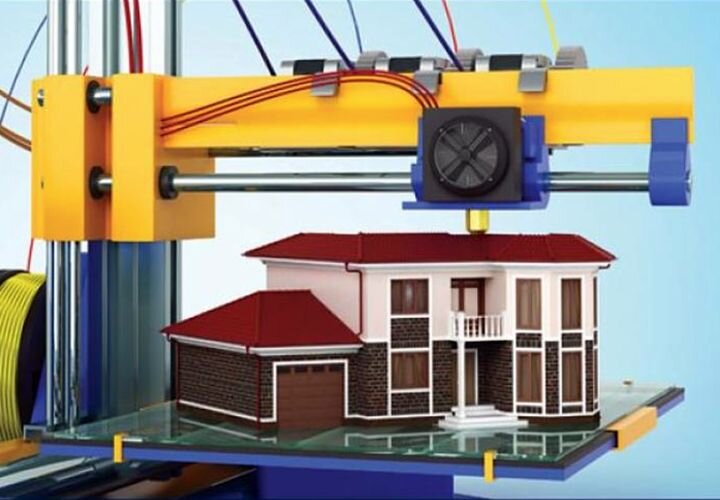![3D Printing of Concrete: State of the Art and Challenges of the Digital Construction Revolution [Source: Amazon]](https://fabbaloo.com/wp-content/uploads/2020/05/image-asset_img_5eb08bc91ca7a.jpg)
This week’s selection is “3D Printing of Concrete: State of the Art and Challenges of the Digital Construction Revolution” by Arnaud Perrot.
In the past couple of years there has been dramatically increasing attention paid to the concept of 3D printing concrete. Unfortunately, much of that attention has been from mass media seeking the mythical “3D printed house in 24 hours”. Don’t get me started on that, as it simply isn’t true.
Fortunately, this book is entitled, “3D Printing of Concrete”, so the authors understand what the technology is really doing at construction sites. However, I notice the book cover seems to illustrate 3D printing a complete house.
It’s not a long book, at only 150ish pages, but it does cover all the basic elements of 3D printing in concrete.
It begins with a discussion of the basics of 3D printing, a common occurrence in any book on 3D printing. But in this case the author discusses the specific types of concrete 3D printing that are present today: deposition vs. Injection into a particle bed. Most of today’s construction 3D printers employ some variation of the deposition process.
There’s a large section discussing the properties of concrete during the printing process, and this is quite important. Concrete is a very peculiar material, and much attention is paid to it even in conventional construction processes. This is because concrete frequently forms the foundation and core elements of our buildings. If it is not composed and handled in an optimal manner, the quality of the concrete could be compromised and by extension the entire building under construction. No one wants buildings to collapse.
An entire chapter is dedicated to this aspect: the mechanical behavior of 3D printed concrete. This is what happens after the concrete has been 3D printed and is set. For example, what happens to the strength of a concrete segment if it has been extruded rather than conventionally poured?
Finally, there is a speculative section that discusses several advances that may be undertaken as a result of construction 3D printer availability.
If it is possible to 3D print concrete, then could we 3D print unusual geometries that might not be possible with conventional making processes? What would the nature of them be? How could they be best made and used?
Of interest could be a section on the several possibilities for reinforcing 3D printed concrete. This could be done, for example, with fibers, but this would have to be done without affecting the flow of the extruder.
If you have an interest in 3D printing in concrete, this is the book for you.
For those seeking texts on 3D printing entire houses in 24 hours, those books are found in the fiction section.
Via Amazon

